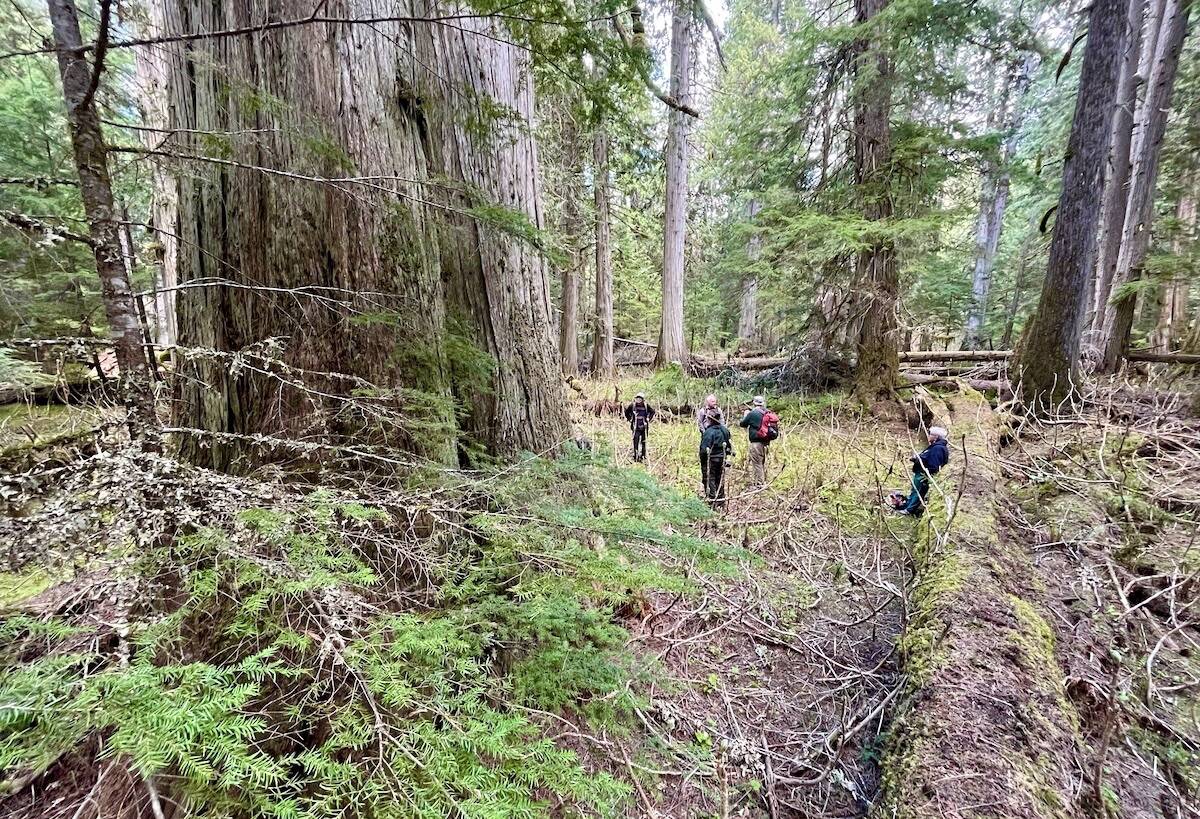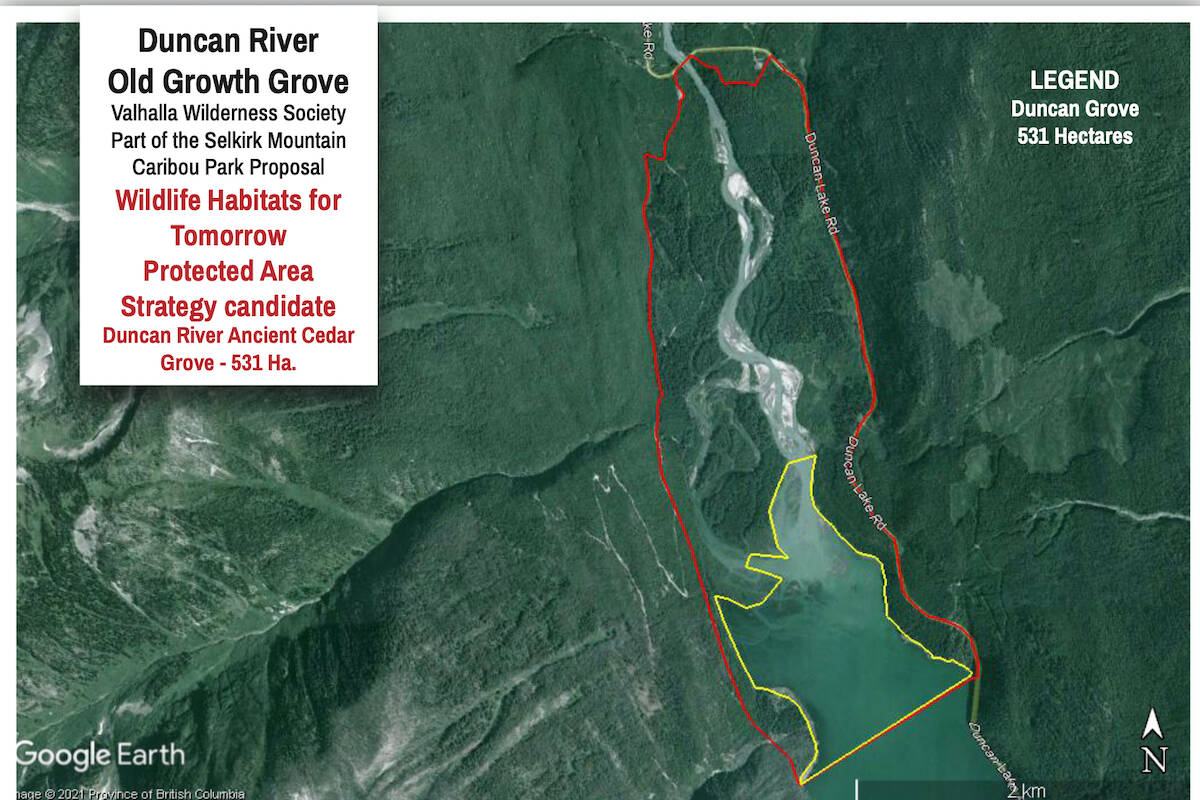A West Kootenay group wants the province to protect a grove of old growth cedars at the head of Duncan Lake about 80 kilometres north of Kaslo.
“There are many trees in this grove that are well over 1,000 years old, and one that is estimated to be 2,100 years old,” says Grant Trower, who lives at Howser on Duncan Lake. “They are the largest trees in the whole southern interior rainforest. It isn’t just old growth. It’s ancient old growth.”
Trower heads the group Wildlife Habitats for Tomorrow that is circulating on online petition, asking for provincial protected area status for the grove under the Parks Act. The petition had almost 24,600 online signatures as of July 4.
The 531-hectare grove consists of 395 ha of forest and 136 ha of wetlands.
The proposed Duncan River Ancient Cedars protected area would include the last remaining remnant of the forest in the 45-kilometre valley bottom that was flooded by the Duncan Dam in 1967. The grove is accessible from Duncan Lake Road on the east side of Duncan Lake.
To visit the grove is “unique and easy to experience,” Trower says. “The opportunity to connect with nature and the magnificent web of life within the hundreds of giant trees is a wonderful source of inspiration lasting a lifetime.”
B.C.’s forest ministry, in an email to the Nelson Star, pointed out that the grove is not slated for logging, and that it is inside a provincial Old Growth Management Area. But this could change, Trower says, and a more formal status would solidify its protection, removing the area from the forest ministry’s jurisdiction and putting in within BC Parks’ mandate.
In its email, the ministry added that the government has no plans to create any provincial parks in that area, but Trower says the kind of protected status his group wants – a designation known as BC Parks Special Features Protected Areas Strategy Goal 2 Designation – could be created more easily and quickly than creating a new park and would still offer the protection of a park. He said there is a pre-existing program of BC Parks to create very small protected areas.
Meanwhile, BC Timber Sales has built a logging road running from the Duncan Lake Road near the grove down the west side of Duncan Lake to access timber that adjoins the boundaries of the cedar grove.
Trower says the grove needs a buffer zone, and that if the neighbouring timber is sold and clearcut, it would subject the cedars to strong winds that could blow them down, and interfere with wildlife connectivity.
Nelson ecologist Rachel Holt told the Nelson Star the areas surrounding the grove should not be logged and a buffer should be left.
“We haven’t done the right planning for ecology,” she said. “We haven’t looked at what should really be reserved within the forested landscape to maintain connectivity and to maintain enough old growth.”
Holt was a member of the province’s technical Advisory Panel on Old Growth in 2021, and has also served as vice chair of the Forest Practices Board.
“We should [be planning] based on the [provincial government’s] Old Growth Strategic Review report that says we’ve been managing for timber and not ecological health. We should be looking at the landscape through a different lens before we harvest and we haven’t made that step. All this has to be sorted out before we build roads into a place like that, especially since the existing weak old growth targets are not met here in the Kootenays.”
Trower says that when the Duncan Dam was built, the province did not log the area that was to be flooded. For many years thereafter at low water, workers would cut some of the big cedars and burn them.
“That went on for a few decades until they cleared the reservoir. So at low water in the spring, when you go from the dam all the way to the back end of the Duncan, there’s literally thousands of ancient cedar stumps. It’s basically a moonscape.”
The small grove of ancient cedars remaining, he says, is the last remnant forest of what was once a large valley-bottom old growth watershed.
READ MORE:
• Stop clear-cutting, says forestry professor after research in West Kootenay
• Blockade set up by protesters ahead of contested logging in Argenta area
bill.metcalfe@nelsonstar.com
Like us on Facebook and follow us on Twitter


